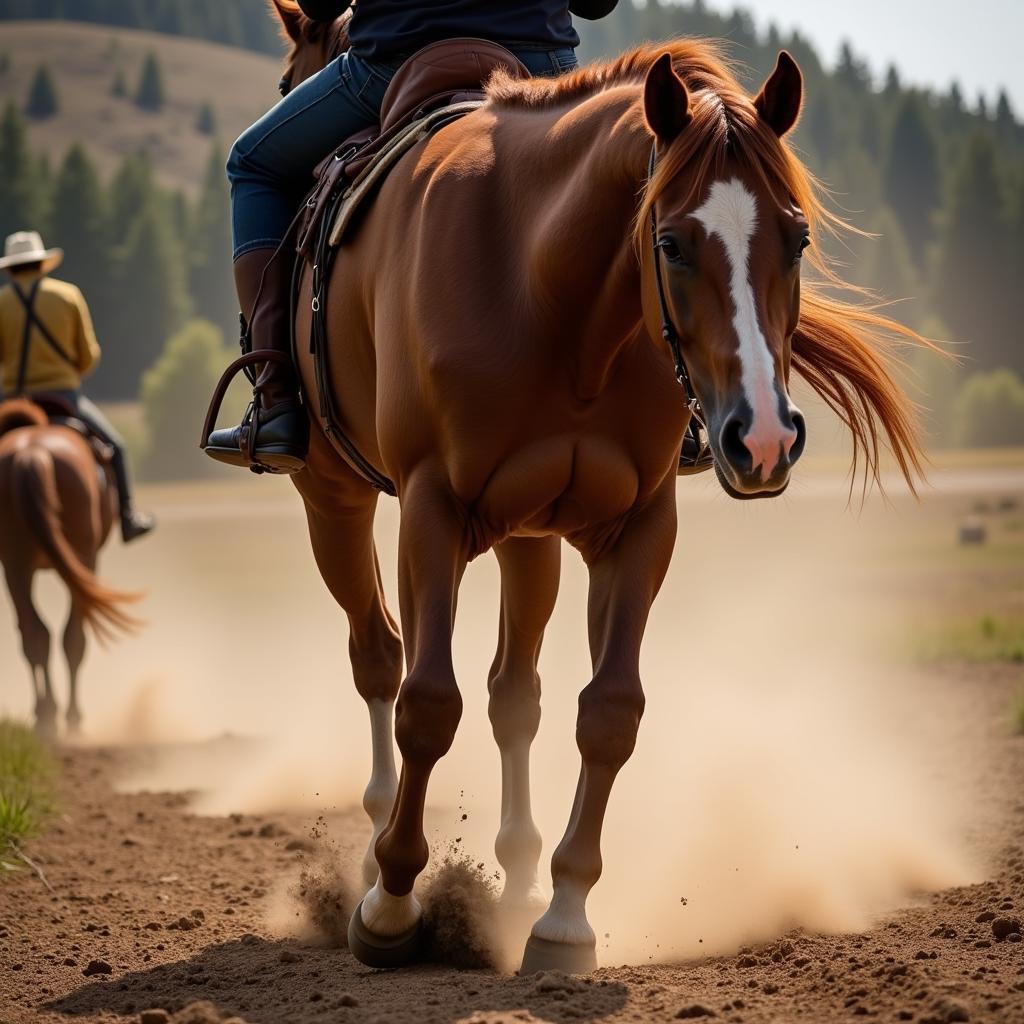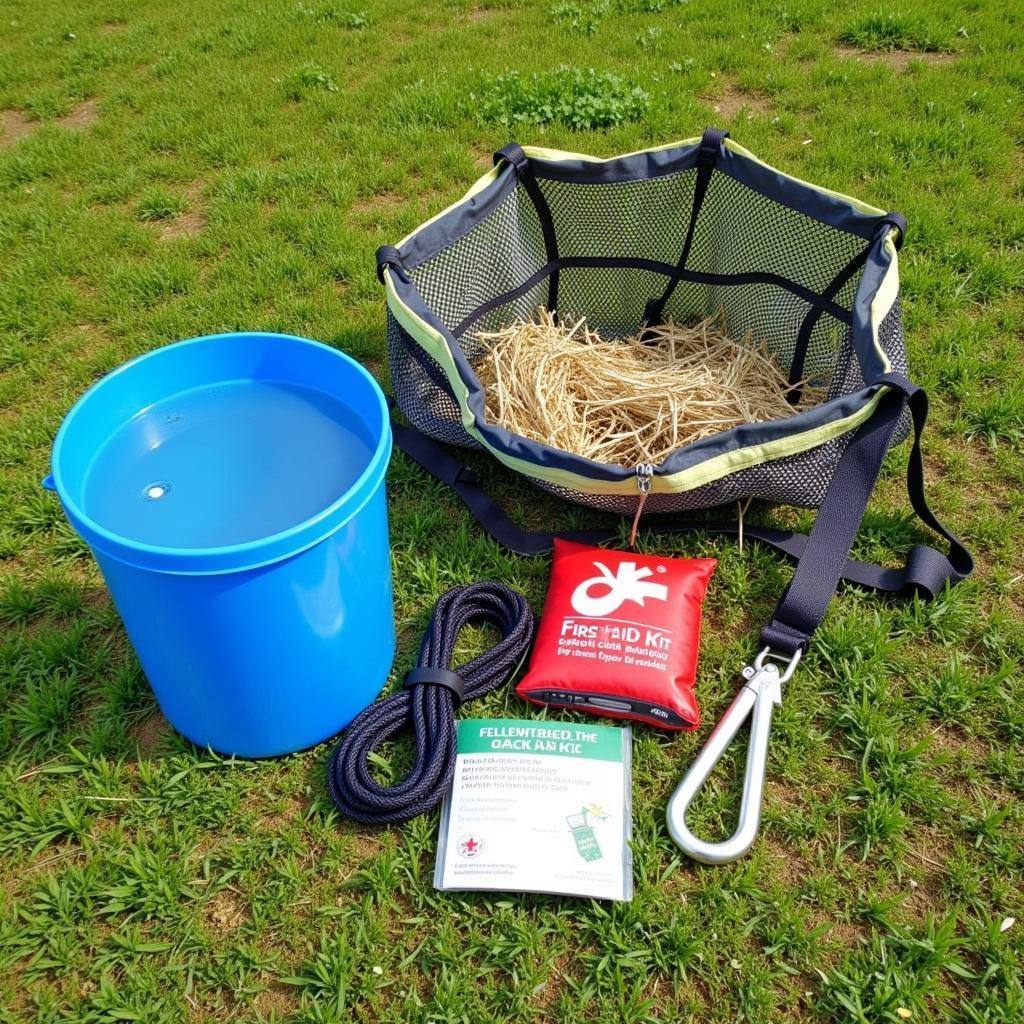Imagine this: you’re riding your horse on a beautiful trail, enjoying the scenery and the fresh air. Suddenly, your horse starts kicking and acting restless. You realize it’s time for a break but wonder where to stop safely and comfortably. Every responsible horse owner knows the importance of recognizing their equine companion’s needs, including providing a dedicated “Kicking Horse Rest Area” during rides.
This article will guide you on creating a safe and comfortable rest area that caters to your horse’s needs while ensuring your peace of mind during those well-deserved breaks.
Understanding Your Horse’s Need to Kick
Horses, despite their size and strength, are prey animals. This means they are instinctively alert and prone to react to perceived threats. Kicking is a natural defense mechanism, often triggered by:
- Discomfort: A poorly fitting saddle, an irritating insect bite, or even an uncomfortable riding position can make a horse kick.
- Boredom or Excess Energy: Horses confined for long periods or those not adequately exercised may kick out of frustration or to release pent-up energy.
- Playfulness: Especially with younger horses, kicking can be a playful way to test boundaries and explore their environment.
 Horse Kicking Behavior
Horse Kicking Behavior
Choosing the Right Spot for a Kicking Horse Rest Area
Selecting the appropriate rest area is crucial for both your horse’s safety and your own. Look for the following features:
- Open Space: Opt for areas with ample space for your horse to move around freely without encountering obstacles or other horses.
- Level Ground: Avoid uneven terrain, steep slopes, or rocky patches. A flat, even surface ensures stability and minimizes the risk of injury.
- Soft Footing: Choose areas with grass or soft dirt rather than hard-packed ground or pavement. This softer footing cushions the impact of hooves, reducing strain on joints and tendons.
Safety Considerations for Your Kicking Horse Rest Area
While a designated rest area promotes relaxation and safety, it’s vital to be mindful of potential hazards:
- Fencing: If possible, choose rest areas with secure fencing to prevent your horse from wandering off or encountering other animals.
- Visibility: Select areas with clear visibility, allowing you to monitor your horse’s behavior and spot any potential issues quickly.
- Proximity to Trails: Locate the rest area a safe distance from the main trail to avoid disturbing other riders or horses passing by.
Essential Equipment for a Comfortable Rest Stop
Having the right equipment on hand can significantly enhance your horse’s comfort during breaks:
- Lead Rope and Halter: Essential for safely securing your horse while allowing for limited movement.
- Water Bucket or Trough: Always provide fresh water, especially during warm weather or after strenuous exercise.
- Hay Net: A small hay net provides a healthy distraction and helps satisfy your horse’s natural grazing instincts.
- First-Aid Kit: Be prepared for minor injuries with a basic equine first-aid kit, including antiseptic, gauze, bandages, and a hoof pick.
 Essential Gear for a Horse Rest Area
Essential Gear for a Horse Rest Area
Making the Most of Your Horse’s Rest Time
Rest stops are not just about preventing kicking; they’re an opportunity to bond with your horse and tend to their well-being:
- Check for Discomfort: Take the time to inspect your horse for any signs of discomfort, such as saddle sores, girth rubs, or insect bites.
- Offer a Gentle Grooming: A quick brush down not only removes dirt and sweat but also improves circulation and strengthens the bond between horse and rider.
- Observe Your Horse: Use this time to observe your horse’s behavior and body language. Look for signs of fatigue, lameness, or any other issues that might require attention.
By creating a dedicated rest area and following these simple guidelines, you can ensure your horse’s comfort and well-being during those essential breaks, turning a potentially stressful situation into a positive experience for both you and your equine partner.
FAQs about Kicking Horse Rest Areas
Q: How often should I provide my horse with a rest area during a ride?
A: It depends on factors like the horse’s fitness level, the terrain, and the weather. As a general guideline, aim for a 10-15 minute break every hour of riding.
Q: What if my horse continues to kick even after a rest?
A: Persistent kicking could indicate an underlying issue, such as discomfort or pain. It’s essential to consult a veterinarian to rule out any medical reasons.
Q: Can I use a tie line instead of a lead rope in a rest area?
A: It’s generally not recommended to tie a horse in a rest area, especially if it’s prone to kicking. Tying limits their ability to move freely and can lead to injury if they panic.
Looking for More Equestrian Resources?
- For quality horse riding gear and equipment, visit our Bisman Online horses for sale page.
- If you’re interested in enhancing your riding skills, explore our horse camp for adults program.
For any questions or concerns about your horse’s health or behavior, don’t hesitate to contact us. We are committed to providing horse owners with the information and support they need to create a safe and enjoyable experience for both horse and rider.
Contact Justus Horses USA:
Phone Number: 0772127271
Email: justushorses@gmail.com
Address: QGM2+WX2, Vị Trung, Vị Thuỷ, Hậu Giang, Việt Nam.